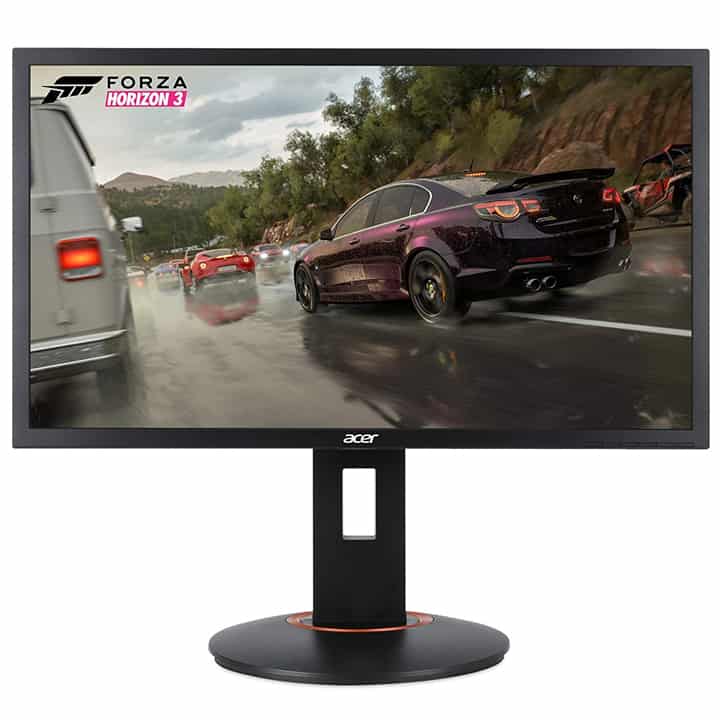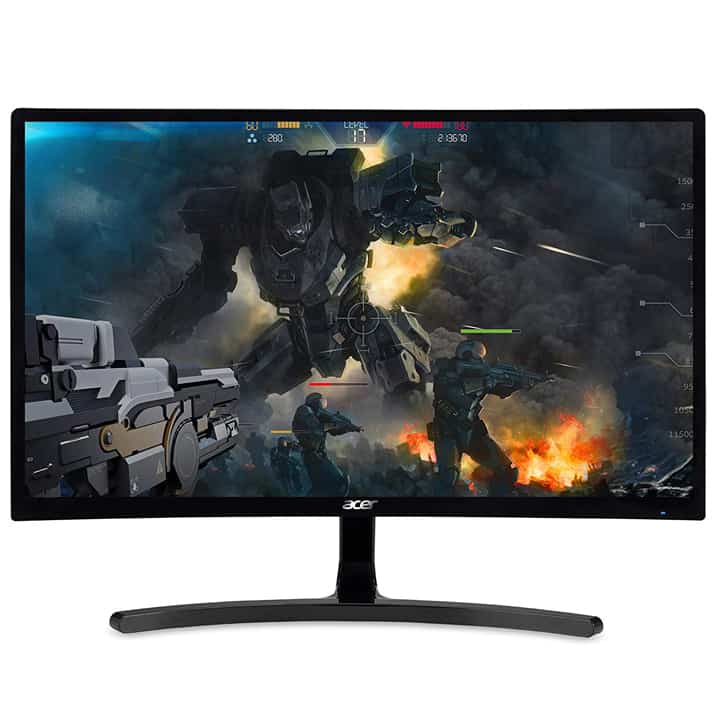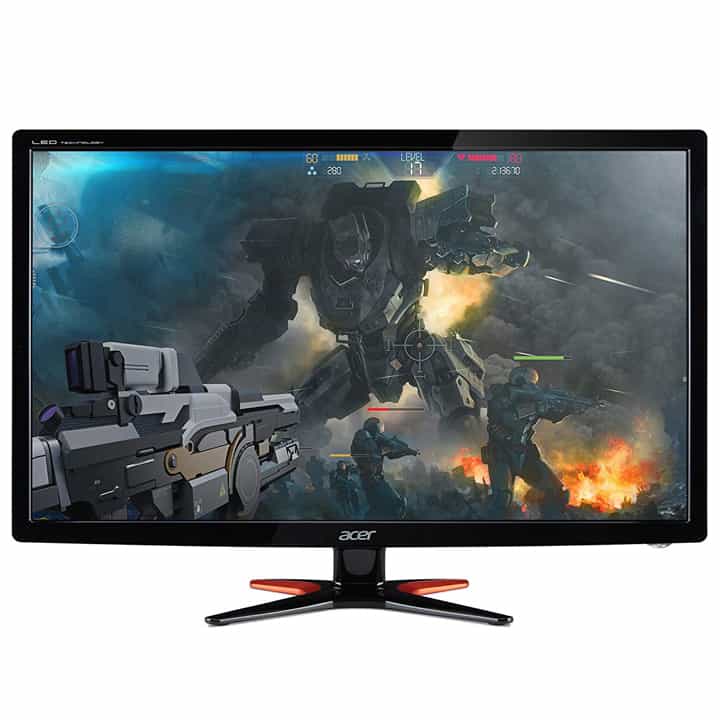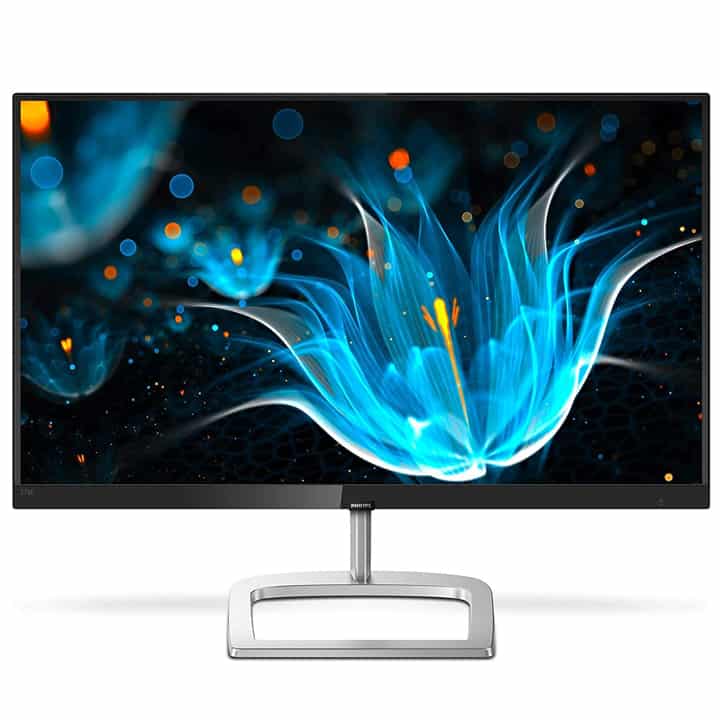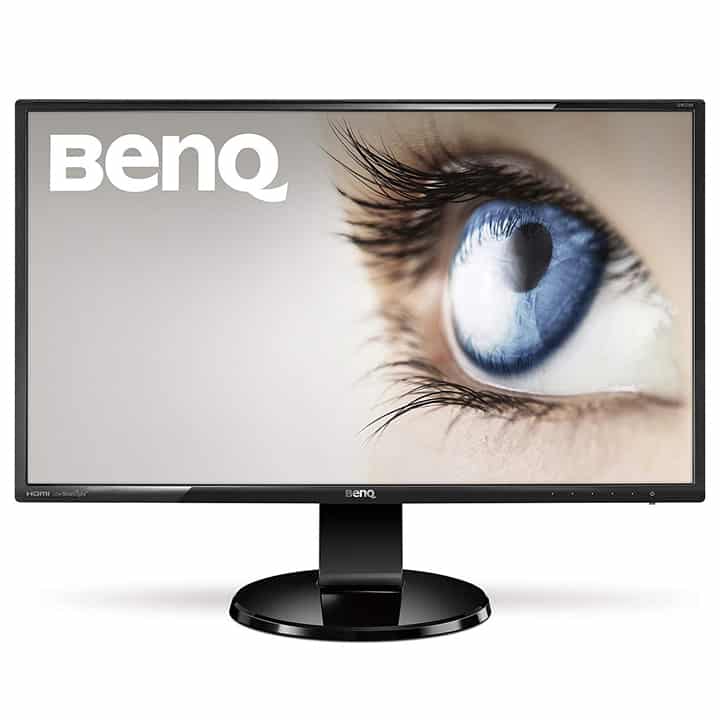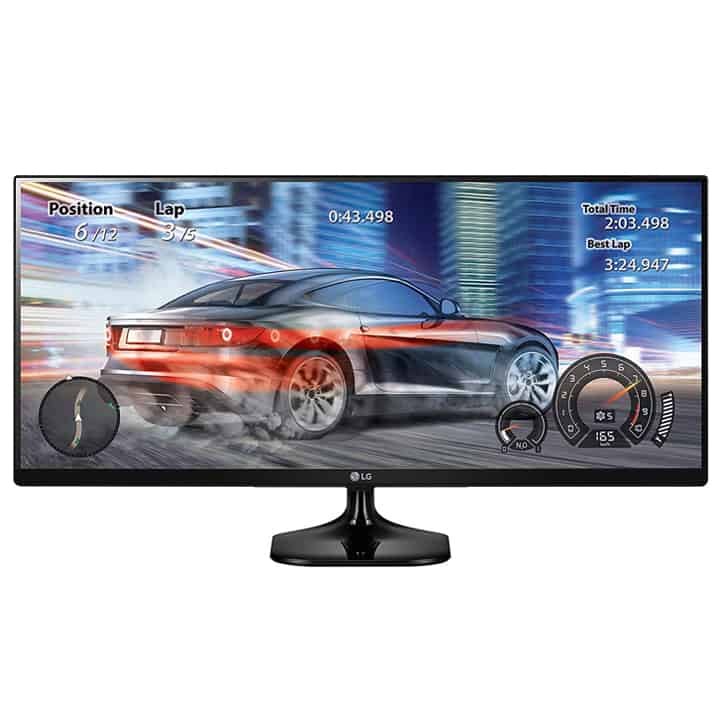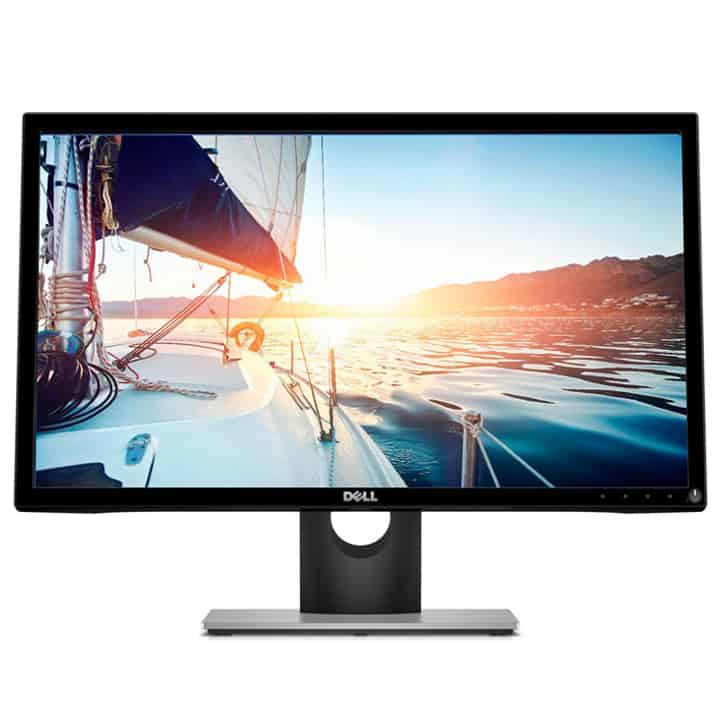You can have the most powerful gaming machine on the planet, but without a decent monitor, its potential will be wasted. Getting a good monitor used to mean forking over a considerable amount of dough, but today it is easy to find affordable monitors with impressive specs.
While we found that there is no single “best gaming monitor under $200” due to all the varying features monitors can have these days, we picked our top seven favorites and reviewed each one. We’ve also included a guide at the end of this article to help let you know how to make the right choice when spending your hard earned dollars.
Best 144Hz monitor under $200
Acer XFA240
- Resolution: 1920x1080
- Screen Size: 24”
- Refresh Rate: 144Hz
- PPI: 91
- Panel Type: TN
- Response Time: 1ms
Curved monitor
Acer ED242QR
- Resolution: 1920x1080
- Screen Size: 23.6”
- Refresh Rate: 144Hz
- PPI: 93
- Panel Type: VA
- Response Time: 4ms
incredible contrast
Acer GN246HL
- Resolution: 1920x1080
- Screen Size: 24”
- Refresh Rate: 144Hz
- PPI: 91
- Panel Type: TN
- Response Time: 1ms
Vibrant IPS panel display
Phillips 276E9QDSB
- Resolution: 1920x1080
- Screen Size: 27”
- Refresh Rate: 75Hz
- PPI: 82
- Panel Type: IPS
- Response Time: 5ms
Eye-strain reducing features
BenQ GW2760HL
- Resolution: 1920x1080
- Screen Size: 27”
- Refresh Rate: 60Hz
- PPI: 82
- Panel Type: VA
- Response Time: 4ms
Ultrawide IPS monitor
LG 25UM58-P
- Resolution: 2560x1080
- Screen Size: 25”
- Refresh Rate: 60Hz (75Hz in low resolution mode)
- PPI: 111
- Panel Type: IPS
- Response Time: 5ms
Most affordable
Dell SE2417HG
- Resolution: 1920x1080
- Screen Size: 23.6”
- Refresh Rate: 60Hz
- PPI: 93
- Panel Type: TN
- Response Time: 2ms
Table of Contents
1. Acer XFA240
Best 144Hz monitor under $200

- Resolution: 1920x1080
- Screen Size: 24”
- Refresh Rate: 144Hz
- PPI: 91
- Panel Type: TN
- Response Time: 1ms
- High refresh rate
- G-sync compatible
- Highly adjustable stand
- TN panel
When it comes to gaming monitors, refresh rate is the number one specification that most people are looking at. So it only makes sense that the number one gaming monitor on our list is a high refresh rate model from Acer.
The XFA240 has a 144Hz refresh rate meaning all your games will feel super smooth, that is, as long as you have a GPU that can push out high frame rates in your favorite titles. Even if you can’t though, this monitor supports Nvidia G-sync, meaning that mismatched frame rates won’t cause screen tearing… assuming you have an Nvidia GPU, of course.
While refresh rate is often the first thing that comes to mind for people when they think of what they want in a gaming monitor, one of the most commonly overlooked aspects of monitors is ergonomics. This monitor has one of the best stands on our list with height adjustment, pivot, tilt, and swivel. This lets you put the monitor in the perfect position for your preferred setup and is a great feature for people who know the suffering of neck pain because your monitor is too high or too low.
All that said, the one major drawback to this monitor is that it uses a TN panel. We’ll address this in more detail shortly in the guide section below, but for now, it is important to know that TN panels have poor viewing angles and are not the best at color production.
2. Acer ED242QR
Curved monitor for maximum immersion

- Resolution: 1920x1080
- Screen Size: 23.6”
- Refresh Rate: 144Hz
- PPI: 93
- Panel Type: VA
- Response Time: 4ms
- Curved screen
- High refresh rate
- VA panel
- Not very adjustable
While curved screens are not entirely new, the most recent wave of them began to sprout up around 2013. The most obvious advantage of curved monitors is the way that it wraps into your peripheral vision increasing immersion. If you’ve ever watched a movie or played a video game on a curved monitor then you already know how much of a difference this makes.
However, the benefits extend far beyond just immersion. Studies have shown that curved monitors can actually reduce the causes and symptoms of eye strain and eye pain. Generally, gentler curvature (in this study as subtle of a curvature as 4000R was used) leads to less eye strain. This particular model uses a balanced 1800R curvature to offer the eye strain benefits while still retaining the engrossing nature of curved screens.
Even without the curved screen, this monitor still boasts some very impressive stats. With a fast 144Hz refresh rate your games will not only wrap around you but will be as smooth as ever. Also, this monitor uses a VA panel that has solid color production and viewing angles.
The only real drawback to this monitor is the stand, which has good tilt adjustment but lacks height adjustment. The stand is pretty tall as well, meaning if you have a higher desk the monitor could end up being a bit high.
3. Acer GN246HL
Bright monitor with incredible contrast

- Resolution: 1920x1080
- Screen Size: 24”
- Refresh Rate: 144Hz
- PPI: 91
- Panel Type: TN
- Response Time: 1ms
- Very bright with high contrast
- High refresh rate
- Terrible stand
If your gaming or workspace area has big windows that let in lots of light, as mine does, then you’ll know the suffering of trying to do anything with a glare-ridden screen. For those set on refusing to let sunlight interfere with their gaming, the Acer GN246LH might be the solution.
This monitor is, in fact, my primary monitor right now, and I can tell you in no uncertain terms that the white background of text documents is searingly bright if you turn the brightness all the way up. More important than the nearly blinding brightness is that this monitor sports an astounding 100 million to 1 contrast ratio, meaning that not only are the whites brighter than the sun itself, but the blacks are deeper than the Mariana Trench.
This monitor was my personal first experience with high refresh rate gaming running at 144Hz, and now I can never go back. The reduced blurriness and improved detail that high refresh rates offer in fast-paced games like Doom or Project Cars is something that really needs to be experienced to be appreciated; it really is a night and day difference.
The one thing I can point to that is not so great about this monitor is the stand. The adjustment is very limited, with only 20 degrees of tilt adjustment and no other adjustment whatsoever. In fact, this monitor is currently being boosted up to my eye level by a stack of books.
4. Phillips 276E9QDSB
Vibrant IPS panel display

- Resolution: 1920x1080
- Screen Size: 27”
- Refresh Rate: 75Hz
- PPI: 82
- Panel Type: IPS
- Response Time: 5ms
- IPS Panel; Highly accurate colors
- Very slim bezel
- Mediocre refresh rate
For those who are photo or video editors by day and gamers by night, one of the most important factors when picking a monitor is color accuracy and color gamut. When it comes to colors, IPS panels are king and the best IPS monitor under $200 is undoubtedly the Phillips 276E9QDSB (Can companies please do something about these naming schemes?).
This monitor sports a 124% coverage of the sRGB color gamut and a 93% coverage of the NTSC color space making it acceptable for color critical tasks like graphic design or color grading. Additionally, its 27-inch size makes spotting fine details while doing such work much easier compared to the standard 24-inch size.
Phillips has also put a good amount of effort into making this monitor look as nice as the images on it with a very slim bezel and modern looking stand. When it comes time to game, this monitor supports AMD FreeSync to prevent screen tearing and has a 75Hz refresh rate. While this is far from the best refresh rate on our list and won’t offer a truly high refresh rate experience, it’s better than most TVs that come in at only 60Hz.
5. BenQ GW2760HL
Best monitor for fighting eye strain

- Resolution: 1920x1080
- Screen Size: 27”
- Refresh Rate: 60Hz
- PPI: 82
- Panel Type: VA
- Response Time: 4ms
- Eye-strain reducing features
- Built in speakers
- Low refresh rate
For those of you who cringed just thinking of the eye strain that the remarkably bright Acer monitor we looked at would cause, the BenQ GW2760HL might be more your speed. This monitor includes a pair of eye-saving features making it easily the best 27-inch monitor under $200 for those who suffer from eye strain.
The first of these is the low blue light plus technology, which filters out the higher spectrums of light as a way to diminish eye fatigue. What’s remarkable is that BenQ’s method of filtering out these more harsh spectrums of light manages to do so without altering the on-screen image color.
This monitor also uses ZeroFlicker technology which prevents the brightness of the backlight from fluctuating. Even though you may not realize it since it is happening at a speed that is imperceptible to you, the backlight on your monitor is actually flickering as each frame comes and goes. This flickering can be rough on your eyes and leads to much greater eye strain and fatigue. BenQ’s ZeroFlicker technology nearly eliminates this.
While this monitor does use a VA panel and flaunts a couple of built-in speakers, it is pretty lacking when it comes to refresh rate. Coming in with a meager 60Hz this monitor won’t offer the silky smooth experience of high refresh rate monitors, but for some, the sacrifice is worth it for better eye health.
6. LG 25UM58-P
Ultrawide IPS monitor

- Resolution: 2560x1080
- Screen Size: 25”
- Refresh Rate: 60Hz (75Hz in low resolution mode)
- PPI: 111
- Panel Type: IPS
- Response Time: 5ms
- Ultrawide 21:9
- Good color production
- Low refresh rate
The 21:9 aspect ratio has been gaining a lot of traction in recent years for both monitors and phones (such as the Sony Xperia). The reason for this is that 21:9 is very nearly identical to the aspect ratio used for widescreen movies when they are played in theaters. This means that when you watch movies or other cinematic content, instead of being letterboxed, it will fill the whole screen naturally making this the best PC monitor under $200 for movie lovers.
When it comes to gaming, the benefits are similar to that of a curved screen. The image fits much more of your peripheral vision which makes the gaming experience more immersive. In addition to the benefits of the ultrawide aspect ratio, this monitor uses an IPS panel meaning it has very impressive color production. In fact, it covers 99% of the sRGB color gamut.
The advantages of this monitor do not end with movies and gaming though. This monitor is also great for productivity thanks to LG’s picture in picture mode that allows you to spread out several documents or windows as if the widescreen monitor were actually several individual monitors. This is a huge boon for those who often write papers or articles and like to have sources open in another window at the same time.
7. Dell SE2417HG
Most affordable gaming monitor

- Resolution: 1920x1080
- Screen Size: 23.6”
- Refresh Rate: 60Hz
- PPI: 93
- Panel Type: TN
- Response Time: 2ms
- Highly affordable
- Available in other sizes
- Lackluster specs
Finally, for all the real budget gamers out there, we have the Dell SE2417HG. This monitor comes in well below our $200 mark and is the most affordable monitor on the market that we feel comfortable actually recommending to people.
While Dell might have a bit of a poor reputation when it comes to their computers (at least amongst gamers) their monitors are actually very nice. This monitor, despite its rock bottom price, has an impressive 2ms latency time. This means that your control inputs will feel responsive and a click of the mouse will register as a shot fired on screen practically instantly.
Additionally, this monitor is available in several smaller and larger sizes, but these are often difficult to find in stock. Unfortunately, this is where the budget-friendly nature of this monitor begins to show. With a mere 60Hz refresh rate and a TN panel that offers meh colors and poor viewing angles, this monitor is a far shot from the best on our list specs wise, but if you’re focused on not breaking the bank then this monitor is a great option.
How to Pick the Best Gaming Monitor Under $200 for Your Needs
Picking a monitor these days is not nearly as cut and dry as it was in the past. Not only do you have resolution and size to worry about, but also refresh rate and even more mystifying things like curvature and aspect ratio. Sadly, covering every minutia of various monitor features is far beyond the scope of this article, so we’ve narrowed it down to a few of the most important things you need to know.
Resolution and PPI
As most people already know, resolution is the measurement of how many pixels there are along the length and height of the monitor. You may have already noticed when shopping for the best monitor under $200 that you will pretty much exclusively find 1080p monitors.
This is where PPI comes in. PPI stands for pixels per inch and is a good way to compare two monitors that have the same resolution. Despite the fact that most of the monitors on our list have the same resolution, the PPI varies because the size of the monitors varies.
Smaller monitors with the same number of pixels will have higher pixel density, or PPI, resulting in them looking sharper when viewed from close up. The highest pixel density on our list is found with the LG 25UM58-P which has a PPI of 111 thanks to its 2560×1080 ultrawide resolution.
Refresh Rate
Most gamers are already familiarized with the importance of refresh rate. Refresh rate is measured in hertz, or Hz, and is a measurement of how many frames the monitors can display per second.
Higher refresh rates can offer smoother movement with less induced blur than lower refresh rates. This can actually lead to a competitive advantage in games as higher refresh rate monitors will show an enemy emerging through a doorway, for example, a brief moment before lower refresh rate monitors.
This smoother and more immediate motion makes a very noticeable difference in fast-paced games. As I mentioned, my first time playing Doom 2016 on a high refresh rate monitor was a life-changing experience that sold me on high refresh rate technology forever.
Panel Type
One of the more misunderstood aspects of monitors is panel type. Panel type refers to the actual method being used inside the display to render colors and images. This means that the type of panel being used in a given monitor has a huge impact on the color quality and vibrancy that the monitor is capable of.
TN Panels. At the lower end, you have the TN panels. Again, getting into the more nuanced differences between monitors and the technology behind them is far beyond the scope of this article, but we will cover the most profound differences between panel types. TN panels are typically the most inexpensive to produce and have poor color production as well as poor viewing angles. However, TN panels have a propensity for speed and are commonly found in very high refresh rate and low latency monitors.
VA Panels. Moving up the scale we have the VA panels. These panels have improved color accuracy and vibrancy compared to TN panels, but still suffer from poor viewing angles. This means that if you move too far to one side or another the colors can easily become distorted.
IPS panels. These are considered the epitome of color and vibrancy. Monitors that use these types of panels often have full sRGB color gamut coverage, meaning they are great for tasks like photo editing or color grading where having accurate true to life colors matters.
Response Time
Response time is a measurement of how long it takes for the pixels in a monitor to turn from one shade of grey to another, or sometimes from white to black. If the response time of a monitor is too high it will not be able to keep up with the refresh rate of the monitor and the result is a streaky and blurry mess, even at high frame rates.
For a 144Hz monitor each frame is on screen for just under 7ms, which means that all of the monitors on our list have pixels that can transition from one state to another before the next frame is ready. Ultimately, panel type will have a much more pronounced effect than response time on the overall quality of the image on your screen.
TN panels are most often at 1ms.
VA panels range between 3-5ms.
IPS panels are usually 5ms but can be 4ms. It’s not a big difference either way.
It’s important to note that not all monitors fit into these ranges, but most of the monitors that we recommend here on PCGuide do.
We always try our best to give the most accurate recommendations and satisfy all of our beloved readers. Please also check our roundup of best gaming monitors under $150 if every monitors that we’ve listed above are a little bit outside of your current budget.

